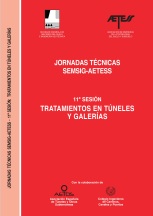MANUAL DE TECNICAS DE MEJORA DEL TERRENO
Ana Bielza Feliu
La necesidad de llevar a cabo proyectos de obra civil y de construcción en terrenos poco adecuados, obliga en muchos casos a la aplicación de técnicas de mejora de estos. En este Manual se describen las técnicas de: compactación dinámica; precarga; columnas de grava; inyecciones; vibrocompactación; refuerzo de suelos y técnicas especiales.
INDICE:
- Introducción
- Compactación dinámica
- Precarga
- Columnas de grava
- Inyecciones
- Vibrocompactación
- Refuerzo del terreno
- Otras Técnicas de mejora del terreno
- Casos prácticos
- Bibliografía y Anexos
Observaciones 1999 Medidas 17x24
Paginas 435 Euros, 41,60



